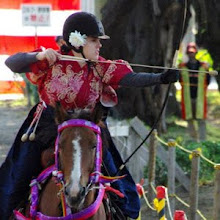Ahh Friday's...The glorious last day of the week, TGIF, two days till Monday, and...Trash Day...Kiyaaaaaaaaaaaa- (scream cut off abruptly).
That's right, here in Okazaki Friday is Trash day. Not the American, put your recyclables out by the mailbox, trash day, but the Japanese Ultra Anal Trash (aka Gomi) Day. Oh Joy oh Rapture *note please read last with a very heavy dose of sarcasm*
To fully understand the, oh let's say, Stupidity, of Gomi Day, you must first understand Japan's Trash Situation (I can't believe I just wrote that...). Japan is an overly populated island where the people live on the flat areas and the rest of the country is mostly mountainous (think alps) which makes it seem even smaller. As a result there are few places for the trash to go. Noticing this the Japanese created a system where you recycle everything or you are shunned by society. That's right, shunned. Now I personally support recycling, and at home in America we are pretty organized in our recycling, but this is a whole new level...
During our orientation at Yamasa, a whole hour was dedicated to, what else, trash throwing etiquette. No, I am not lying, trash throwing etiquette, aka how to throw away your trash without getting lynched by your friendly Japanese neighbors. While I'm sure you all would be thrilled to hear the whole hour of the talk, due to time constraints, and to save my fingers, I will give you the high points.
A)There are 13 basic categories of trash, all of which must be separated into their separate color coated plastic bags, which you can purchase at your local convenience store.
1)Burnable Trash
2)Non-burnable Trash
3)Paper containers and packages
4)Plastic containers and packages
5)PET Bottles
6)Empty Cans
7)Empty Bottles (large beer and sake)
8)Empty Bottles (other)
9)Newspapers, magazines, milk cartons
10)Used Clothing
11)Hazardous Waste
12)Flammable Hazardous Waste
13)Large Sized Trash
B)All trash must be thoroughly separated, down to the last plastic straw wrapper, and cleaned. Yes, cleaned, as in cut your used toothpaste bottle in half and clean out what is inside, cleaned.
C)The trash may only be put out on trash day, generally between 6:30 and 9:30 am. Never before or after.
D)Your nice, foreigner distrusting, neighbors will be out patrolling the trash and recycle areas, and may ask to examine your bags and make you return if not sorted correctly.
E)There are certain places that certain types of trash may be placed. Do not put your recyclables at the burnable trash area.
Well, those are the highlights. Though in truth, since I am only a stupid foreigner I get away with only 8 separate types of trash, (6 on a regular basis) and have yet to have my trash searched. Though some of the nice neighbors have tried to use their x-ray vision on my bags. Although my neighbor tried to put his Plastic out with the burnable, and we haven't seen him since...
Jaa Ne!


























